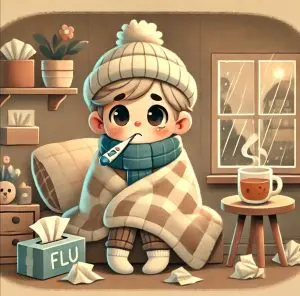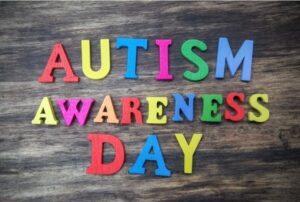Little Emma has been struggling with a stuffy nose lately, especially when the temperature drops. Her parents have noticed that whenever she catches a cold or the weather gets colder, her nasal congestion worsens, making it difficult for her to sleep through the night. Like many children, Emma finds it hard to breathe through her nose when it's blocked, and as a result, she ends up waking up multiple times, unable to get the quality sleep she needs. This disrupts her energy levels and mood the next day.
As a parent, dealing with a child's stuffy nose, especially at night, can be frustrating. Fortunately, there are several ways to help your little one sleep better even when dealing with nasal congestion. Let's explore some practical methods that can help your child rest easier despite a stuffy nose.
How Nasal Congestion Affects Your Child's Sleep
When a child experiences nasal congestion, it can make it difficult for them to breathe comfortably. Babies and toddlers especially rely on their noses for breathing, so when their nasal passages are blocked, they often resort to breathing through their mouths. This can cause dry mouth, snoring, and may even lead to disturbed sleep, as the child may wake up several times throughout the night. The lack of proper rest can also leave them feeling tired and cranky the next day.
How to Help Your Child Sleep Better with a Stuffy Nose
- Keep the Air Moist
Dry air can worsen nasal congestion, especially in the winter months. Using a humidifier or placing a bowl of water in your child's room can help keep the air moist, which will alleviate dry nasal passages and make it easier for them to breathe. Aim for a humidity level between 40% and 60% to avoid excessive moisture that could promote mold growth. - Adjust the Sleeping Position
When children lie down, the congestion in their nose tends to get worse because mucus builds up. To alleviate this, elevate your child's pillow slightly to allow them to sleep in a more inclined position. This helps prevent mucus from accumulating and keeps the nasal passages clearer for easier breathing. - Use Saline Nasal Spray
A saline nasal spray is a simple and effective solution to help clear your child's nasal passages. It works by loosening the mucus inside their nose, making it easier to expel. After spraying the saline, give it a few minutes and then gently help your child blow their nose or use a nasal aspirator to remove the mucus. This can bring immediate relief and help them breathe better. - Offer Warm Drinks
A warm beverage before bed can help soothe your child's throat and provide comfort when they're dealing with a stuffy nose. You can offer warm water, warm milk, or even honey-lemon tea if they’re old enough. The warmth also helps to relax them, making it easier for them to drift off to sleep. - Avoid Allergic Triggers
If your child's stuffy nose is caused by allergies, such as dust or pet dander, try to avoid allergens in the bedroom. Make sure to keep pets out of the child's room, clean the room regularly, and wash the bedding often. Reducing exposure to allergens will help minimize nasal congestion and improve sleep quality. - Keep the Room Clean and Airy
Sometimes, pollutants in the air can make nasal congestion worse. If you have pets or use strong-smelling cleaning products, they might irritate your child's nasal passages. Ensure the room is well-ventilated and use non-scented or natural cleaning products to keep the air clean. You can also try using natural air fresheners like tea tree oil or lavender to improve air quality without aggravating their symptoms. - Consider Safe Medication
For more severe cases of nasal congestion, consider using over-the-counter medications designed for children. Decongestants and antihistamines may help alleviate symptoms, but make sure to follow the recommended dosage and age restrictions. Always consult with a pediatrician before giving your child any medication, especially if they are under the age of two. - Offer Comfort and Reassurance
Nasal congestion can be uncomfortable and sometimes scary for children. Offer comfort by holding your child, telling them stories, or gently patting their back to help them relax. Physical affection can reduce anxiety and help them feel more at ease, making it easier to fall asleep.
When to Seek Medical Advice
While nasal congestion is common in children, it can also be a sign of an underlying condition such as a cold, flu, or allergic rhinitis. If the congestion persists for more than a week, or if your child is also experiencing symptoms like fever, difficulty breathing, or a persistent cough, it’s important to consult a doctor. These could be signs of a more serious condition that requires medical attention.
Conclusion
Dealing with a stuffy nose can make it difficult for your child to sleep, but with the right care, you can help alleviate their discomfort and ensure they get the rest they need. By keeping the air moist, adjusting their sleeping position, using saline nasal sprays, offering warm drinks, and reducing allergens in the home, you can help your child sleep better even when they're dealing with a stuffy nose. If symptoms persist or worsen, always consult a pediatrician to rule out any underlying health issues.
References:
- "How to Help Your Child Sleep When They're Sick," American Academy of Pediatrics, 2021.
- "Managing Nasal Congestion in Children," WebMD, 2020.
- "How to Care for Your Child’s Cold and Flu," Mayo Clinic, 2021.
- "Natural Remedies for Nasal Congestion," KidsHealth, 2020.













